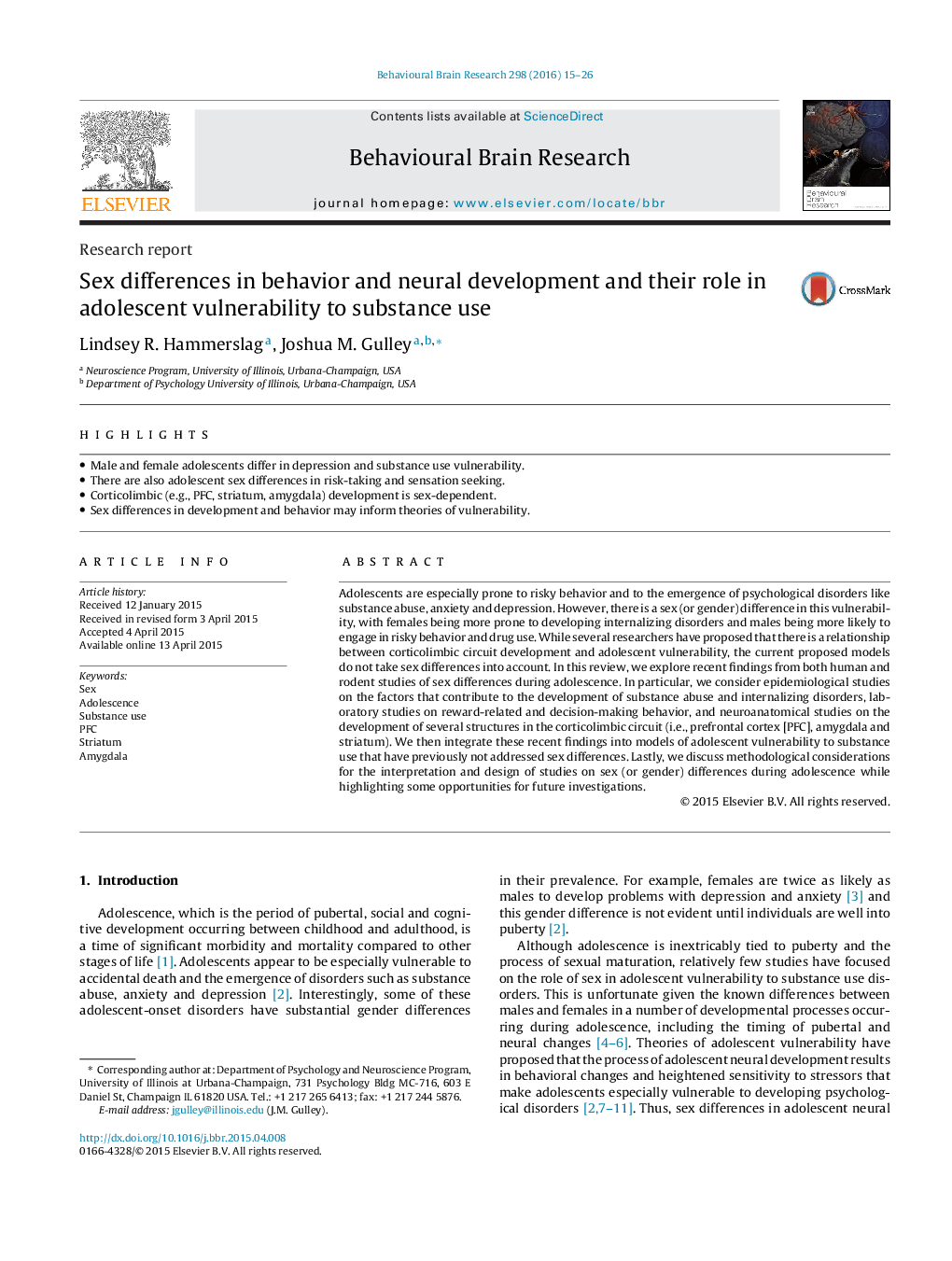| Article ID | Journal | Published Year | Pages | File Type |
|---|---|---|---|---|
| 6256340 | Behavioural Brain Research | 2016 | 12 Pages |
â¢Male and female adolescents differ in depression and substance use vulnerability.â¢There are also adolescent sex differences in risk-taking and sensation seeking.â¢Corticolimbic (e.g., PFC, striatum, amygdala) development is sex-dependent.â¢Sex differences in development and behavior may inform theories of vulnerability.
Adolescents are especially prone to risky behavior and to the emergence of psychological disorders like substance abuse, anxiety and depression. However, there is a sex (or gender) difference in this vulnerability, with females being more prone to developing internalizing disorders and males being more likely to engage in risky behavior and drug use. While several researchers have proposed that there is a relationship between corticolimbic circuit development and adolescent vulnerability, the current proposed models do not take sex differences into account. In this review, we explore recent findings from both human and rodent studies of sex differences during adolescence. In particular, we consider epidemiological studies on the factors that contribute to the development of substance abuse and internalizing disorders, laboratory studies on reward-related and decision-making behavior, and neuroanatomical studies on the development of several structures in the corticolimbic circuit (i.e., prefrontal cortex [PFC], amygdala and striatum). We then integrate these recent findings into models of adolescent vulnerability to substance use that have previously not addressed sex differences. Lastly, we discuss methodological considerations for the interpretation and design of studies on sex (or gender) differences during adolescence while highlighting some opportunities for future investigations.
